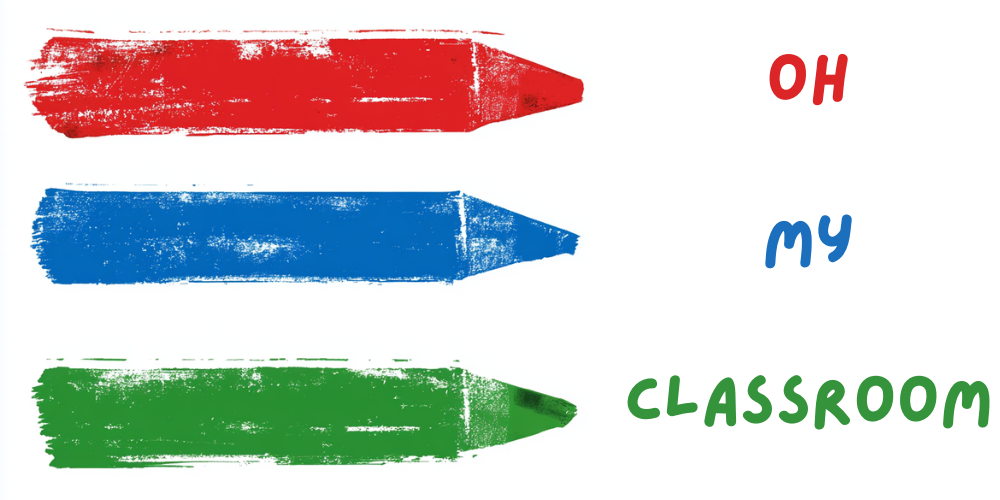Engaging children in interactive and stimulating activities is key to their overall development.
One way to captivate their attention and encourage their learning is through mirror activities.
These activities involve the use of mirrors to explore various concepts and engage children in a hands-on experience.
Whether it’s enhancing their fine motor skills, fostering self-awareness, or encouraging creativity, mirror activities can provide a multitude of learning opportunities for kids.
Now, we present mirror activities for kids that will not only entertain children but also help them grow and learn in a fun and exciting way.
Mirror Self-Portraits:
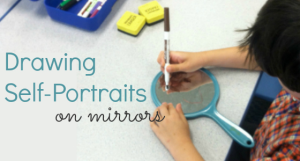
Encourage your child’s creativity and self-expression with mirror self-portraits. Provide them with a small mirror and art supplies such as markers, crayons, or paints. Let them sit in front of the mirror and observe their facial features, expressions, and unique characteristics. Then, guide them to draw or paint their self-portraits on a piece of paper or canvas, using the mirror as a reference. This activity not only enhances their artistic skills but also promotes self-awareness and boosts self-esteem as they recognize and appreciate their individuality.
Mirror Movement:
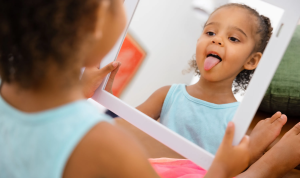
Mirror movement is a fun and interactive activity that helps children develop their coordination and motor skills. Stand facing your child with a mirror in between. Start making simple movements such as raising your left hand, and ask them to mirror your actions by raising their right hand. Gradually increase the complexity of the movements, incorporating actions like jumping, spinning, or touching different body parts. This activity not only improves their physical coordination but also teaches them the concept of mirroring and encourages teamwork and communication.
Mirror Reflections:

Mirror reflections is an exciting activity that introduces children to symmetry and patterns. Place a variety of colorful objects like blocks, toys, or shapes on one side of a large mirror. Encourage your child to arrange the objects in a symmetrical pattern on the mirror surface. As they create different designs and formations, they will observe how the mirror reflects the objects, creating a mirrored image. This activity stimulates their cognitive skills, spatial awareness, and understanding of symmetry while fostering creativity and problem-solving abilities.
Related: 20 Delightful Boat Activities for Toddlers
Mirror Magic:
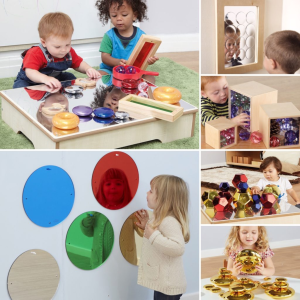
Engage your child’s curiosity and imagination with mirror magic. Set up a table with a large mirror placed vertically. Place various objects like coins, marbles, or small toys on the table. Encourage your child to explore the magical effect of the mirror by arranging the objects in a way that creates illusions or interesting reflections. They can experiment with different angles, positions, and distances to produce captivating visual effects. This activity not only sparks their creativity but also develops their visual perception and understanding of light and reflection.
Mirror Measuring:
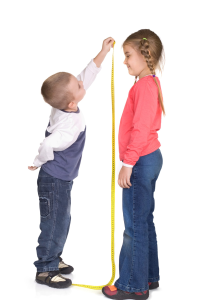
Mirror measuring is a hands-on activity that introduces children to measurement concepts while enhancing their math skills. Provide your child with a ruler or measuring tape and a small mirror. Ask them to measure different body parts such as the length of their hand, the width of their face, or the height of their nose. Encourage them to compare and record the measurements on a chart or notebook. This activity not only familiarizes them with measurement tools but also strengthens their understanding of numerical concepts, estimation, and comparison.
Related: 20 Sensational Letter S Activities for Preschool
Mirror Mosaics:
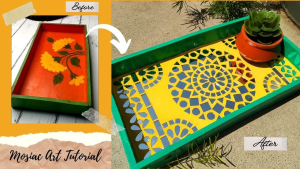
Introduce your child to the world of mosaics with a mirror twist. Provide them with a small mirror, colorful craft materials like paper squares, foam shapes, or mosaic tiles, and a glue stick. Encourage them to create a mosaic design on the mirror surface by arranging and sticking the materials onto it. They can explore different patterns, shapes, and color combinations, fostering their creativity and fine motor skills. The reflective quality of the mirror adds an extra element of visual appeal to their mosaic artwork.
Mirror Storytelling:

Enhance your child’s storytelling skills and imagination with mirror storytelling. Sit together with a small mirror and a collection of storybooks or picture cards. Take turns holding the mirror and telling a story based on the reflection you see. Encourage your child to observe the mirror image and incorporate it into their narrative, creating characters, settings, and plotlines inspired by the reflection. This activity not only stimulates their storytelling abilities but also boosts their observational skills, empathy, and creativity.
Mirror Nature Walk:

Take your child on a nature walk with a mirror in hand to explore the wonders of the outdoors from a different perspective. While walking in a park or garden, encourage them to hold the mirror low to the ground and observe the reflections of plants, flowers, and insects. They can also use the mirror to look up at the sky and discover the reflected beauty of clouds or trees. This activity promotes curiosity, observation skills, and an appreciation for the natural world while incorporating the element of reflection.
Mirror Shadow Play:

Combine the concepts of reflection and shadow with mirror shadow play. Set up a light source such as a lamp or flashlight and position it to cast a shadow on a wall or surface. Provide your child with a small mirror and encourage them to explore the shadow and its reflection using the mirror. They can manipulate the mirror to change the shape, size, and direction of the shadow, creating imaginative scenarios and storytelling opportunities. This activity fosters creativity, spatial awareness, and understanding of light and shadow.
Mirror Science Experiments:
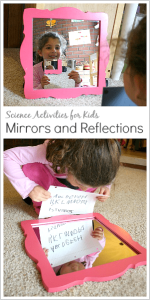
Engage your child in hands-on science experiments using mirrors. Explore concepts like reflection, refraction, and optics through various activities. For example, you can create a simple periscope using two small mirrors and a cardboard tube to demonstrate how mirrors reflect light and change its direction. Another idea is to experiment with different angles and positions of a mirror to investigate how it affects the reflection. These mirror science experiments spark curiosity, critical thinking, and a deeper understanding of scientific principles.
Mirror Yoga:
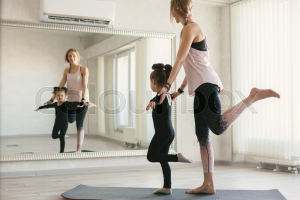
Introduce your child to the practice of yoga while incorporating mirrors for self-awareness and body alignment. Set up a yoga mat facing a large mirror. Guide your child through a series of age-appropriate yoga poses, encouraging them to observe their reflection in the mirror as they move through each pose. The mirror provides visual feedback, helping them to improve their posture, balance, and flexibility. This activity promotes mindfulness, body awareness, and physical well-being.
Mirror Dress-Up:
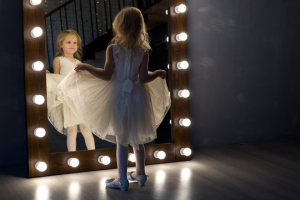
Unleash your child’s imagination and creativity with a mirror dress-up. Gather a variety of costumes, accessories, and props, and set up a designated area with a mirror. Encourage your child to try on different outfits, mix and match accessories, and experiment with various styles. As they look at themselves in the mirror, they can role-play, invent characters, and create their own stories. This activity nurtures imaginative play, self-expression, and confidence-building.
Mirror Symmetry Art:

Combine art and symmetry in this captivating mirror activity. Provide your child with a sheet of paper and a small mirror. Instruct them to fold the paper in half and place the mirror along the fold line. Ask them to create a design or draw a shape on one side of the paper, using the mirror as a guide to ensure that the image is mirrored on the other side. When they unfold the paper, they will be amazed at the symmetrical masterpiece they have created. This activity enhances their understanding of symmetry, spatial reasoning, and artistic skills.
Mirror Alphabet Hunt:
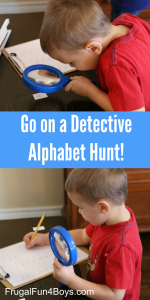
Make learning the alphabet an exciting adventure with a mirror alphabet hunt. Write or print out uppercase or lowercase letters of the alphabet and place them in various locations around the room. Provide your child with a small mirror and challenge them to find and identify the letters using the mirror reflection. As they search for the hidden letters, they will reinforce letter recognition, letter-sound associations, and visual discrimination skills. This activity adds a playful twist to letter learning.
Mirror Puppet Show:
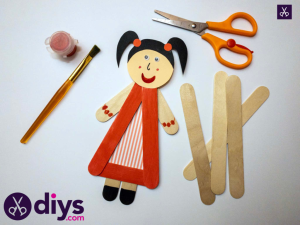
Ignite your child’s storytelling and creativity with a mirror puppet show. Help them create simple puppets using craft materials such as popsicle sticks, paper, or fabric. Set up a small stage area with a mirror backdrop. Encourage your child to hold the puppets in front of the mirror, allowing them to see the reflection of their puppet characters as they bring them to life. They can improvise stories, act out scenes, and engage in imaginative play. This activity enhances storytelling abilities, communication skills, and self-confidence.
Mirror Dance:
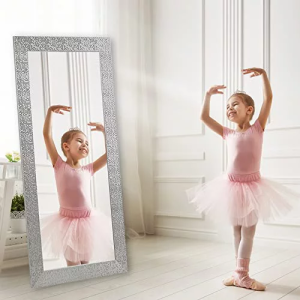
Turn up the music and let your child explore the joy of dancing with a mirror. Clear space in front of a full-length mirror and encourage your child to express themselves through movement. They can observe their reflection in the mirror and experiment with different dance styles, movements, and rhythms. This activity not only promotes physical fitness and coordination but also boosts self-expression, body awareness, and creativity.
Mirror Puzzles:

Engage your child’s problem-solving skills with mirror puzzles. Find or create puzzles that feature symmetrical images or patterns. Provide your child with a small mirror and challenge them to complete the puzzle by using the mirror reflection as a guide. As they manipulate the pieces and observe the mirror image, they will strengthen their spatial reasoning, logical thinking, and fine motor skills. Mirror puzzles add an intriguing twist to traditional puzzle-solving.
Mirror Science Magic:
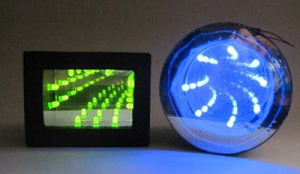
Combine science and magic with mirror science tricks. Perform simple optical illusions using mirrors to create fascinating effects. For example, show your child how to create a disappearing act by strategically placing a mirror to reflect an object and make it appear as if it vanishes. You can also demonstrate how to make objects seem to float or change direction by using mirrors. These science magic tricks encourage curiosity, critical thinking, and understanding of light and reflection.
Mirror Memory Game:
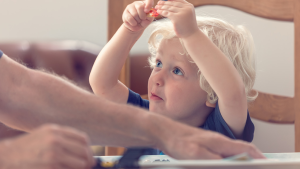
Enhance your child’s memory and observation skills with a mirror memory game. Arrange a set of objects or picture cards in front of a mirror. Give your child a limited amount of time to observe and memorize the arrangement. Then, cover the mirror and ask them to recreate the arrangement from memory. This activity challenges their concentration, visual memory, and attention to detail. It’s a fun and interactive way to exercise their cognitive abilities.
Mirror Emotion Exploration:
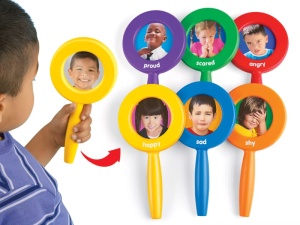
Promote emotional intelligence and empathy with mirror emotion exploration. Sit with your child in front of a mirror and ask them to make different facial expressions to represent various emotions such as happiness, sadness, surprise, or anger. Encourage them to observe their reflection and discuss the characteristics and cues associated with each emotion. This activity helps children recognize and understand emotions, develop empathy, and express themselves effectively.
